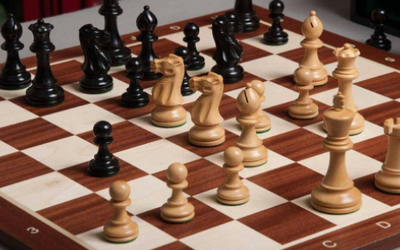Endgames
Tactics to learnIn a chess game, there are many types of endgames, and the right strategy depends heavily on what pieces remain on the board for each side. It may seem counterintuitive at first, but many teachers, including grandmaster Garry Kasparov, recommend that new players start by studying endgame positions rather than memorizing books of openings or finessing middlegame. Why? Because studying the endgame gives players a keen sense of the advantages and shortcomings of various pieces.
What Is an Endgame in Chess?
How you define the endgame depends on who you’re talking to. Some theorists believe the endgame starts when both queens are gone, others argue that they begin when a side has less than a certain amount in non-pawn material left on the board. The exact definition is less important than the general features of the endgame:
- 1. Even minor material differences can be decisive.
- 2. The king can now become a powerful attacking piece.
- 3. Players will attempt to promote their pawns into queens.
5 Common Types of Endgames in Chess
Endgames are typically classified according to which pieces (material) remain on the board. Keep in mind that material advantages in endgames are usually decisive, though with precise play it’s still possible for the disadvantaged player to eke out a draw or even a win, depending on the character of the endgame.
- 1. Pawnless Endgames are also called basic or fundamental endgames. These tend to feature one or two pieces against an enemy king. (For example, a king and a queen against a king, a king and two bishops against a king, etc.)
-
- Rook Endgames (also called rook-and-pawn endgames) can be highly choreographed affairs, often requiring dozens of moves before checkmate can be achieved. To get a handle on these endgames, study the Philidor and Lucena Positions.
- 3. Endgames featuring two minor pieces against a rook depend heavily on initiative. In these situations the exact number of pawns and the pawn structure are extremely important.
- 4. Bishop-and-pawn endings can be exciting, highly mobile affairs, especially if the bishops share the same color square. If the bishops are on opposite colors, however, you should be prepared to accept a draw.
- 5. Queen-and-pawn endings tend to be long and deliberate. In these games a queen can easily escort a passed pawn to the queening square with minimal difficulty.
Chess Endgame Tips
Position still matters in the endgame, but here material differences tend to be decisive. Even a difference of a single pawn can represent a decisive advantage more than half of the time (depending on which other material remains in play.) Here are a few very general tips to navigating the endgame.
- 1. Generally speaking, chess players with the advantage in material should generally try to force exchanges of non-pawn pieces.
- 2. Players who have more pawns should generally try to avoid exchanging pawns. This creates more chances for promotions.
- 3. Initiative is extremely important in the endgame. Gaining a tempo over an opponent via zugzwang (forcing a player to take a move when they’d rather pass) is worth at least a pawn in certain situations.
- 4. Aggressive kings and passed pawns tend to give major advantages.
Want to Become a Better Chess Player?
Whether you’re an enthusiastic amateur or dreaming of going pro, mastering the game of chess is a practice in patience. No one knows this better than Garry Kasparov, who, at age 22, became the youngest world chess champion. In Garry Kasparov’s MasterClass on the art of chess, the master player shares the chess strategy that made him a six-time world champion, including his favorite openings and advanced tactics, and how to develop the right instincts and philosophy to become a stronger player.
Want to become a better chess player? The MasterClass Annual Membership provides exclusive video lessons from master chess players like Garry Kasparov.


